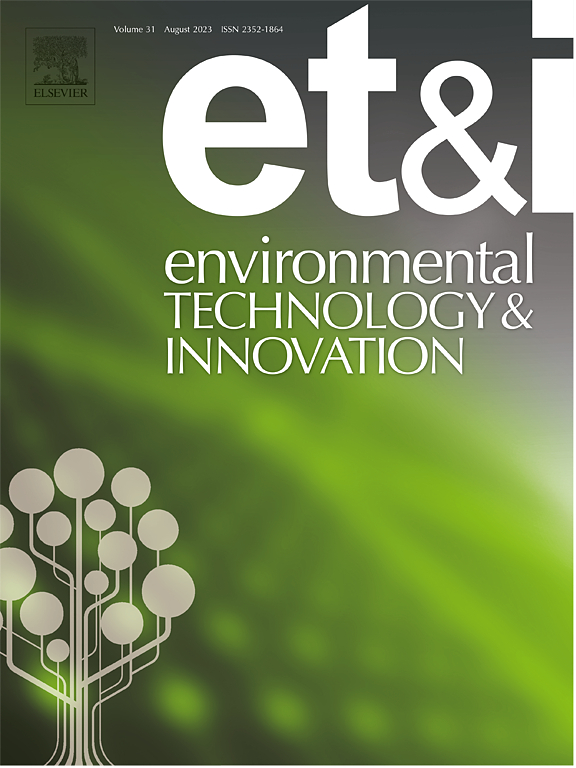利用杂原子在氮催化裂解中抑制纤维素和聚乙烯废弃物中产生的多环芳烃
IF 6.7
2区 环境科学与生态学
Q1 BIOTECHNOLOGY & APPLIED MICROBIOLOGY
引用次数: 0
摘要
废塑料转化为生物炭是解决当前全球塑料污染危机的一种既环保又经济可行的方法。本研究研究了纤维素和聚乙烯塑料复合材料(CLPE)在300 ~ 900℃的不同温度下共热解制备生物炭,重点研究了热原衍生的多环芳烃(PAHs)的危害关联。在900°C N2载气条件下合成的CLPE900的PAHs浓度(15,849 ± 315 ng g-1)高于在CO2气氛下生产的CLPE700(2480 ± 56 ng g-1)。采用B、N、NB、S、SB、NS等不同的非均相原子作为掺杂剂,减少PAHs的生成,改善CLPE共热解。具体来说,通过将硼部分与CLPE结合,可能会抑制多环芳烃的形成,从而产生99.7 %的去除性能。这些发现揭示了通过杂原子辅助热化学处理减轻多环芳烃对环境影响的有希望的途径。本文章由计算机程序翻译,如有差异,请以英文原文为准。
Using heteroatom in nitrogen-mediated pyrolysis to suppressed polycyclic aromatic hydrocarbon derived from cellulose and polyethylene waste
The conversion of waste plastic to biochar is an environmentally friendly and economically feasible approach to handle the current global crisis of plastic pollution. This study investigates the fabrication of biochar from cellulose and polyethylene plastics composites (CLPE) via co-pyrolysis under various temperatures ranging from 300 to 900 °C, focusing on hazard associations of pyrogenic-derived polycyclic aromatic hydrocarbons (PAHs). CLPE900, synthesized at 900 °C under N2 as a carrier gas, exhibited a higher concentration of PAHs (15,849 ± 315 ng g–1) than CLPE700 (2480 ± 56 ng g–1) produced in a CO2 atmosphere. Further, different heterogeneous atoms including B, N, NB, S, SB, and NS were used as dopants to reduce PAHs formation and improve CLPE co-pyrolysis. Specifically, by combining boron moieties with CLPE potentially suppressed the formation of PAHs, resulting in a 99.7 % removal performance. These findings reveal a promising avenue for mitigating the environmental impact of PAHs via heteroatom-assisted thermal chemical processing.
求助全文
通过发布文献求助,成功后即可免费获取论文全文。
去求助
来源期刊

Environmental Technology & Innovation
Environmental Science-General Environmental Science
CiteScore
14.00
自引率
4.20%
发文量
435
审稿时长
74 days
期刊介绍:
Environmental Technology & Innovation adopts a challenge-oriented approach to solutions by integrating natural sciences to promote a sustainable future. The journal aims to foster the creation and development of innovative products, technologies, and ideas that enhance the environment, with impacts across soil, air, water, and food in rural and urban areas.
As a platform for disseminating scientific evidence for environmental protection and sustainable development, the journal emphasizes fundamental science, methodologies, tools, techniques, and policy considerations. It emphasizes the importance of science and technology in environmental benefits, including smarter, cleaner technologies for environmental protection, more efficient resource processing methods, and the evidence supporting their effectiveness.
 求助内容:
求助内容: 应助结果提醒方式:
应助结果提醒方式:


